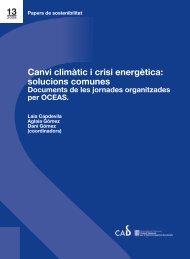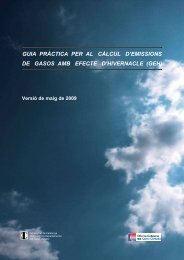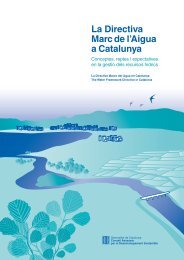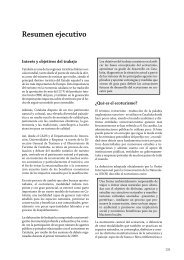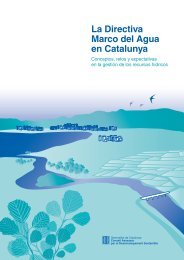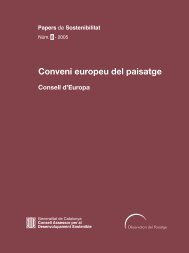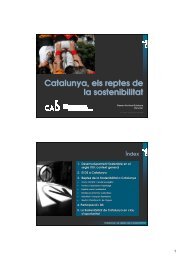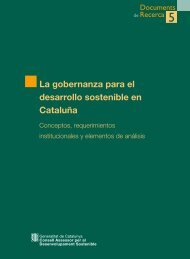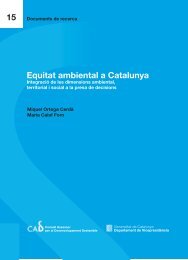Estratègies per al desenvolupament sostenible - Generalitat de ...
Estratègies per al desenvolupament sostenible - Generalitat de ...
Estratègies per al desenvolupament sostenible - Generalitat de ...
Create successful ePaper yourself
Turn your PDF publications into a flip-book with our unique Google optimized e-Paper software.
2. Why Sustainable Development RequiresThought and Strategic ActionFrom a <strong>per</strong>spective of sustainability, world <strong>de</strong>velopment sets out some un<strong>de</strong>niablech<strong>al</strong>lenges that cannot be faced on an isolated basis, without takinginterrelationships into consi<strong>de</strong>ration. This can be seen simply by c<strong>al</strong>ling to min<strong>de</strong>conomic disparities and politic<strong>al</strong> instability; extreme poverty; m<strong>al</strong>nutrition;disease; margin<strong>al</strong>isation; population growth; prevailing mo<strong>de</strong>ls of consumption;energy use; climate change; nitrogen excess; the <strong>de</strong>terioration of natur<strong>al</strong>resources; the loss of biodiversity; water, soil and air pollution; the growingshortage of water resources; and the specific pressures of urban areas, etc.It is the clear interaction (<strong>al</strong>beit difficult to <strong>de</strong>fine) of the above ch<strong>al</strong>lenges that(1) provi<strong>de</strong>s the basis for the i<strong>de</strong>a of sustainable <strong>de</strong>velopment as a conceptintegrating the different dimensions of <strong>de</strong>velopment and (2) requires the adoptionof a strategic approach to sustainable <strong>de</strong>velopment as the most suitable forconsi<strong>de</strong>ring interactions.The 1987 Brundtland Report <strong>de</strong>fined sustainable <strong>de</strong>velopment as <strong>de</strong>velopmentthat meets present needs without compromising the capacity of future generationsto meet their own needs. The Brundtland Report, however, did not <strong>de</strong>fine theconcept of needs. It <strong>al</strong>so raised many questions. More recently, there has beenemphasis on the i<strong>de</strong>a of intergeneration<strong>al</strong> equity. The notion of sustainable<strong>de</strong>velopment thus leads to the mor<strong>al</strong> obligation of every generation of ensurefuture generations a qu<strong>al</strong>ity of life that is no lower than its current level. Morerecent <strong>de</strong>finitions un<strong>de</strong>rline what are known as the three pillars of sustainabilityand their inter<strong>de</strong>pen<strong>de</strong>nce: these are economic, environment<strong>al</strong> and soci<strong>al</strong>. Thecomplexity of the interaction of these dimensions of human <strong>de</strong>velopment, andthe limited knowledge we have thereof, means that the concept of sustainable<strong>de</strong>velopment is often confused with the i<strong>de</strong>a of environment<strong>al</strong> sustainability. Thisconfusion, still <strong>de</strong>eply rooted, obstructs a view of what sustainable <strong>de</strong>velopmentmight contribute to ensuring coherence in the politic<strong>al</strong> changes required indifferent sectors.A good way of overcoming these limitations consists in consi<strong>de</strong>ring that thesustainability of human <strong>de</strong>velopment <strong>de</strong>pends on our capacity to maintain asufficient level of assets for the future. It should be un<strong>de</strong>rstood that the combination129




